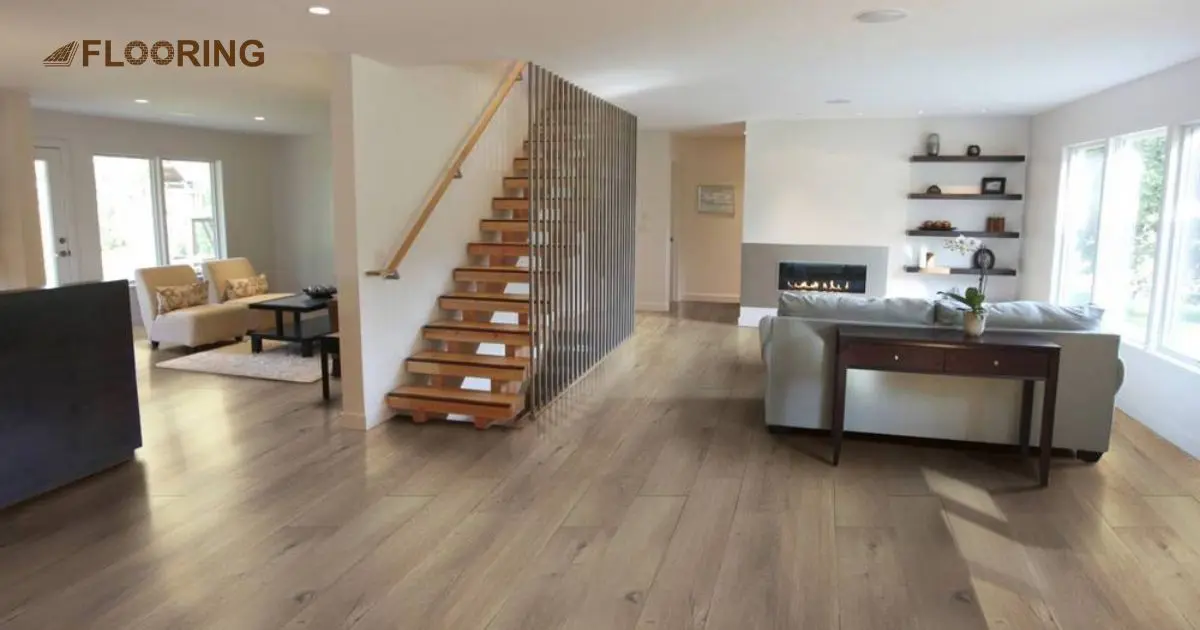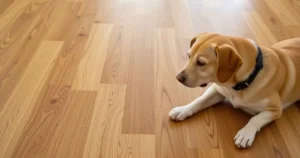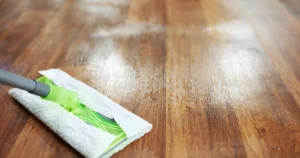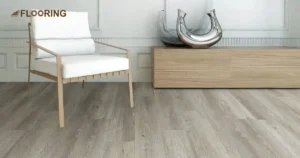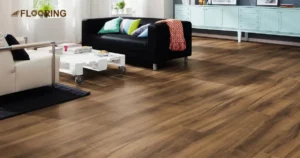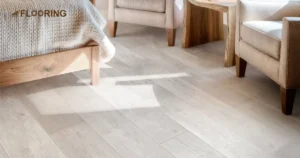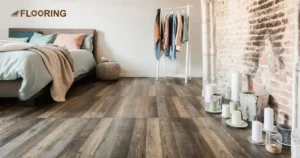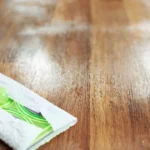Staggering flooring is a crucial technique that enhances both aesthetics and durability. This method involves offsetting the end joints of adjacent planks or tiles. Why do you stagger flooring? It creates a stronger surface that resists damage and looks more appealing.
Table of Contents
Professional installers rely on staggering for good reasons. It improves weight distribution and moisture resistance in your floors. Understanding why you stagger flooring helps homeowners make informed decisions about their flooring projects. This technique significantly impacts the longevity and performance of various flooring materials.
Key Takeaways
- Staggering flooring improves structural integrity by distributing weight evenly across the surface.
- The offset pattern created by staggering enhances moisture resistance and prevents damage.
- Staggered flooring installation significantly boosts the visual appeal of your space.
- Different rooms benefit from specific staggering techniques based on their unique requirements.
- Whether DIY or professional, proper staggering is crucial for long-lasting, beautiful floors.
The Science Behind Staggered Flooring
Staggering flooring is more than just a visual choice. It’s a scientifically proven method that enhances the overall performance of your floors. These principles apply to various flooring types, including when you stagger laminate flooring, enhancing its durability and appearance. The science behind this technique lies in two main factors: weight distribution and moisture control.
Weight Distribution and Stability
Staggered flooring significantly improves weight distribution across the entire floor surface. By offsetting the end joints, the load is spread more evenly, reducing stress on individual planks or tiles. This even distribution prevents weak points from forming and minimizes the risk of buckling or warping over time.
Effective Moisture Control
Moisture is a common enemy of flooring materials. The staggered installation creates a barrier against moisture penetration. By offsetting the joints, you prevent continuous seams that could allow moisture to seep through. This arrangement helps maintain the integrity of the subfloor and reduces the risk of water damage to your flooring.
Why Do You Stagger Flooring – Key Benefits
Staggering flooring offers numerous advantages that go beyond mere aesthetics. This installation technique provides a range of benefits that contribute to the longevity and performance of your floors. Here are the key reasons why you should stagger your flooring:
- Enhanced Structural Integrity: Staggered flooring distributes weight more evenly, reducing stress on individual planks or tiles. This arrangement prevents weak points and extends the life of your flooring.
- Improved Aesthetic Appeal: Staggering creates a natural, flowing pattern that enhances the visual appeal of your space. It adds depth and character to your floors, making them more visually interesting.
- Better Moisture Resistance: By offsetting joints, staggered flooring creates a more effective barrier against moisture penetration. This helps protect your subfloor and reduces the risk of water damage.
- Increased Stability: Staggered installation provides greater stability to your flooring. It minimizes movement and reduces the likelihood of gaps forming between planks or tiles over time.
- Enhanced Durability: The improved weight distribution and moisture resistance of staggered flooring contribute to its overall durability. This installation method helps your floors withstand daily wear and tear more effectively.
Why Do You Stagger Flooring in Different Spaces
The importance of staggering flooring varies depending on the specific room and its usage. Different spaces have unique requirements and challenges that staggered flooring can address. Let’s explore why you should stagger flooring in various areas of your home.
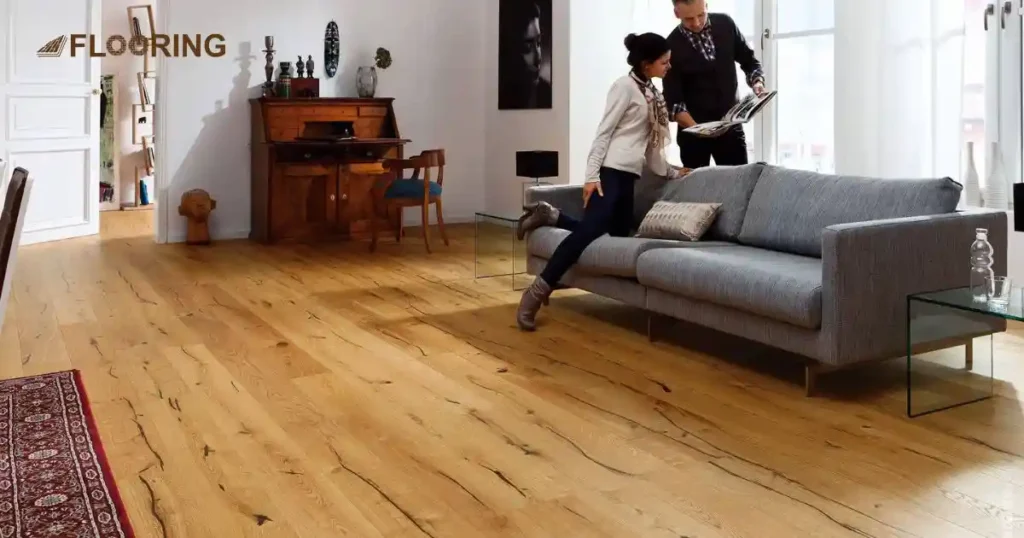
Living Areas and Bedrooms
Living areas and bedrooms benefit greatly from staggered flooring. These high-traffic spaces require floors that can withstand constant use while maintaining their aesthetic appeal.
| Aspect | Benefits of Staggered Flooring |
| Aesthetics | Staggered flooring creates a visually pleasing pattern that enhances the overall look of living areas and bedrooms. It adds depth and character to these spaces, making them more inviting. |
| Durability | The even weight distribution of staggered flooring helps these high-traffic areas withstand daily wear and tear. This installation method reduces the risk of weak spots forming over time. |
| Comfort | Staggered flooring provides a more stable surface underfoot. This increased stability contributes to a more comfortable walking experience in living areas and bedrooms. |
Kitchens and Bathrooms
Kitchens and bathrooms present unique challenges due to their exposure to moisture and spills. Staggered flooring is particularly beneficial in these spaces.
| Aspect | Benefits of Staggered Flooring |
| Moisture Resistance | The staggered installation creates a more effective barrier against water penetration. This is crucial in kitchens and bathrooms where spills and moisture are common occurrences. |
| Safety | The increased stability of staggered flooring reduces the risk of slips and falls. This is especially important in wet areas like bathrooms and kitchens. |
| Easy Maintenance | Staggered flooring in kitchens and bathrooms is easier to clean and maintain. The offset joints prevent continuous seams where dirt and grime can accumulate. |
Hallways and Entryways
Hallways and entryways are high-traffic areas that require durable and visually appealing flooring. Staggered installation is particularly beneficial in these spaces.
| Aspect | Benefits of Staggered Flooring |
| Wear Resistance | Staggered flooring distributes foot traffic more evenly in hallways and entryways. This reduces wear on individual planks or tiles, extending the life of your flooring. |
| Visual Flow | The staggered pattern creates a sense of flow in narrow spaces like hallways. It can make these areas appear longer and more spacious. |
| Dirt Resistance | Offset joints in staggered flooring make it harder for dirt and debris to settle. This is particularly beneficial in entryways where outdoor elements are often tracked. |
Staggering Techniques for Various Flooring Types
Different flooring materials require specific staggering techniques to maximize their benefits. The method you choose depends on the type of flooring you’re installing. Let’s explore the staggering techniques for various popular flooring types.

Hardwood and Engineered Wood Flooring
Hardwood and engineered wood floors benefit greatly from proper staggering. This technique enhances their natural beauty and structural integrity.
| Staggering Technique | Description | Benefit |
| Random Stagger | End joints are offset by varying lengths, typically between 6 to 10 inches. This creates a natural, organic look that mimics traditional hardwood installations. | Enhances the wood’s natural appearance and reduces waste during installation. |
| H-Pattern | End joints are aligned with every other row, creating an H-shaped pattern. This method is often used for wider planks. | Provides a more structured look while maintaining the benefits of staggered installation. |
| Step Pattern | End joints are offset by a consistent length, usually one-third of the plank length. This creates a regular, repeating pattern. | Offers a balance between visual interest and installation efficiency. |
Vinyl Plank and Tile Flooring
Vinyl flooring requires specific staggering techniques to maximize its durability and visual appeal. These methods help prevent pattern repetition and enhance the floor’s overall look.
| Staggering Technique | Description | Benefit |
| Third-Offset Pattern | End joints are staggered by one-third of the plank length. This is a common method for vinyl plank flooring. | Creates a natural look while providing excellent stability and moisture resistance. |
| Five-Plank Pattern | Five different plank lengths are used in a repeating pattern. This method works well for vinyl tiles. | Adds visual interest and reduces the appearance of pattern repetition. |
| Brick-Lay Pattern | Tiles or planks are offset by half their length, similar to a brick wall. | Provides a classic look that works well in both traditional and modern spaces. |
Laminate Flooring and Bamboo
Laminate and bamboo flooring benefit from staggering techniques that enhance their appearance and performance. These methods help these materials mimic the look of natural wood.
| Staggering Technique | Description | Benefit |
| Random Stagger | End joints are offset by varying lengths, similar to hardwood installation. This works well for both laminate and bamboo. | Creates a natural, wood-like appearance and improves the floor’s overall stability. |
| Multi-Width Pattern | Planks of different widths are used in a repeating pattern. This technique is particularly effective for bamboo flooring. | Adds visual interest and mimics the look of custom hardwood floors. |
| Diagonal Installation | Planks are installed at a 45-degree angle to the walls. This method can be used for both laminate and bamboo. | Creates a unique look that can make small spaces appear larger. |
Avoid Common Mistakes When Staggering Laminate Flooring
When staggering laminate flooring, certain errors can compromise the installation’s integrity and appearance. Avoiding the common mistakes when staggered flooring ensures a professional-looking result and maximizes the benefits.
- Insufficient stagger: Ensure end joints are offset by at least 6 inches. Inadequate staggering can create weak points in your floor, reducing its stability and visual appeal.
- Repeating patterns: Avoid creating a noticeable “stair-step” or H-pattern. Vary the stagger lengths to achieve a more natural, random appearance that enhances the laminate’s wood-like look.
- Ignoring expansion gaps: Leave proper expansion space around the room’s perimeter. Failing to do so can lead to buckling or warping as the laminate expands and contracts with temperature changes.
- Using damaged planks: Inspect each plank before installation. Using damaged pieces can create weak points on your floor and detract from its overall appearance.
- Improper subfloor preparation: Ensure the subfloor is clean, dry, and level before installation. Neglecting this step can lead to an uneven surface and potential damage to your laminate flooring.
Why Do You Stagger Flooring – DIY vs. Professional Installation
The decision to stagger flooring yourself or hire a professional depends on various factors. For beginners learning how to stagger laminate flooring, it’s essential to start with proper planning and measurement. While professional installation ensures optimal results. Let’s explore the tools, skills, and considerations for both approaches.
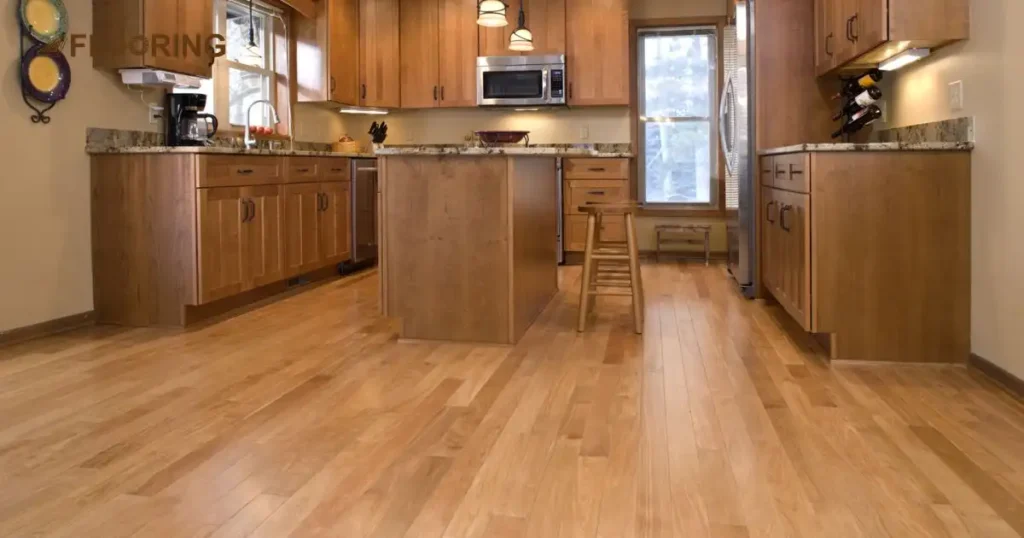
Tools and Skills Required
Proper tools and skills are essential for successful flooring installation. Whether you choose DIY or professional installation, understanding these requirements is crucial.
| Aspect | DIY Installation | Professional Installation |
| Tools | Basic tools like a saw, measuring tape, spacers, and a tapping block are necessary. | Professionals can access various specialized tools, ensuring precise and efficient installation. |
| Skills | Basic carpentry skills, attention to detail, and patience are required. Understanding subfloor preparation and moisture management is crucial. | Professionals possess extensive experience and specialized skills in various flooring types and installation techniques. |
| Time Investment | DIY installation can be time-consuming, especially for beginners. Proper planning and execution may take several days. | Professional installation is typically faster, with most jobs completed in one or two days. |
| Cost | DIY installation can be more cost-effective in terms of labor, but mistakes can be costly. | Professional installation may cost more upfront but offers peace of mind and guaranteed results. |
When to Call in the Experts
While DIY installation can be rewarding, there are situations where professional help is advisable. Complex layouts, large spaces, or specialized flooring materials often require expert knowledge. Professionals can handle unexpected issues like subfloor irregularities or moisture problems effectively.
They also ensure proper acclimation of materials and the use of appropriate underlayments. If you’re unsure about your skills or the complexity of the job, it’s best to consult a professional. Their expertise can save you time, money, and potential headaches in the long run.
Frequently Asked Questions
How often should you stagger flooring joints?
When staggering flooring, aim for a minimum offset of 6 inches between joints. For best results, vary the stagger pattern to avoid a repeating “stair-step” effect. This technique enhances both the structural integrity and visual appeal of your floor.
Can you stagger flooring diagonally?
Yes, you can stagger flooring diagonally. This method adds visual interest and can make small rooms appear larger. However, diagonal staggering requires more precise cutting and may result in more waste material.
Does staggering flooring affect installation time?
Staggering flooring can slightly increase installation time compared to a straight-lay pattern. However, the benefits of improved durability and aesthetics outweigh the extra time invested. Proper planning can help streamline the staggering process.
Can you stagger flooring in a herringbone pattern?
Herringbone patterns are a form of staggered flooring. This advanced technique creates a distinctive V-shaped design. While more complex to install, herringbone staggering adds a luxurious touch to your floors.
How does staggering affect flooring expansion and contraction?
Staggering flooring helps accommodate natural expansion and contraction. By offsetting joints, you create more space for movement without compromising the floor’s integrity. This is especially important for wood and laminate flooring.
Is it necessary to stagger luxury vinyl tile (LVT) flooring?
Yes, staggering LVT flooring is recommended. It enhances the floor’s stability and creates a more natural, stone-like appearance. Proper staggering also improves the water-resistant properties of LVT floors.
How does staggering affect the sound of floating floors?
Staggering flooring in floating installations helps reduce noise. The offset joints minimize the “hollow” sound often associated with floating floors. This technique creates a more solid feel underfoot and improves overall acoustic performance.
